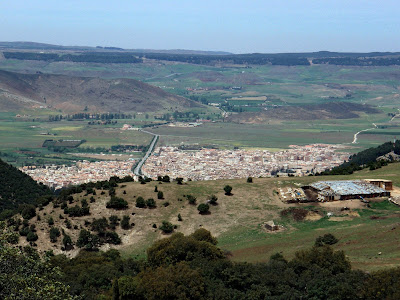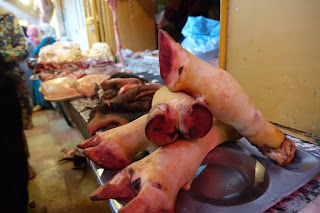But sometime in April, the mood lightened along with the skies, and for the last couple of months it seems every museum has a new show, great concerts and orchestras are playing at the Philharmonie, new plays and movies open every week, and crowds packed the French Open Tennis tournament (in spite of the rain).
Finally, with the big Euro 2016 Soccer tournament currently playing throughout France, cheers for "Les Bleus" can be heard everywhere, as well as spontaneous singing of "La Marseillaise" during games. A palpable uplift in the national mood, this in spite of ongoing labor disputes, strikes, demonstrations, and rowdy, destructive English and Russian soccer fans!
So, as our time here rapidly comes to an end, we have been trying to get to as many of these new shows and events, and watch as many football games on tv before we leave on Sunday!
In the museum world, some of the special exhibitions have familiar names, others not so much. At the Musée d'Art Moderne, paintings by Albert Marquet (1875-1947) -- who I did not know at all -- have been drawing crowds for several weeks. A lifelong friend of Matisse, Marquet was initially a member of the Fauves, whose bright colors are evident in this landscape from the Midi.
He later moved to more naturalist style with landscapes like this luminous La Varenne Sainte Hilaire, la barque.
Even though history considers Marquet a minor painter, and although he did not sell many paintings during his lifetime, he exhibited frequently at the Salons, and was widely respected by his peers. His wife, Marcelle (here painted in 1931), was a frequent model throughout his life.
In his later years, in the 1940s, Albert Marquet lived on the rue Dauphine in Paris, just a stone's throw from where he made this painting on the rue des Grands Augustins in 1904. I was certainly glad to have made his acquaintance!
Meanwhile, over at the Musée d'Orsay, "Le Petit Douanier", Henri Rousseau (1844-1910) is enjoying a splendid retrospective. The self-taught, singular, hard-to-put-a-label-on artist worked for a long time as a city toll collector before retiring and taking up painting full time.
Rousseau never actually left Paris, and yet his jungle paintings are among his most well known. He found his "jungle" inspiration apparently from children's books and from visits to local botanical gardens and the Museum of Natural History, with its massive, lush greenhouses.
Picasso became an admirer of Rousseau, as did many of the leading writers and painters of the day. His final painting, The Dream (1910) became his epitaph. Guillaume Apollinaire wrote the following homage that was later inscribed on Rousseau's tomb:
"We salute you Gentle Rousseau you can hear us.
Delaunay, his wife, Monsieur Queval and myself.
Let our luggage pass duty free through the gates of heaven.
We will bring you brushes paints and canvas.
That you may spend your sacred leisure in the
light and Truth of Painting.
As you once did my portrait facing the stars, lion and the gypsy."
Delaunay, his wife, Monsieur Queval and myself.
Let our luggage pass duty free through the gates of heaven.
We will bring you brushes paints and canvas.
That you may spend your sacred leisure in the
light and Truth of Painting.
As you once did my portrait facing the stars, lion and the gypsy."
One of my favorite museums in Paris, the Jacquemart-André on the Blvd Haussmann, not only has a beautiful permanent collection of art and furnishings from the family of Édouard André and Nelie Jacquemart, a superior gift shop and an excellent café/restaurant, it also presents some of the most interesting special exhibitions. The current one, "L'Atelier en Plein Air" ("The Open Air Studio") is no exception.
The subtitle of the show, "Impressionists in Normandy", traces the history of the new "outdoor" landscape painting that had its early roots in England. Beginning in the 1860s, French painters such as Boudin and Courbet and others settled in Honfleur, exploring the region and capturing its light and scenery.
With train service from Paris expanding into Normandy -- allowing easy access to the countryside and the coastal communities -- the whole notion of frolicking on a beach and swimming in the ocean took hold. The English had been pioneers in such delights, the French joining in with gusto somewhat later, as in this painting by Eugène le Poittevin La Baignade à Étretat from around 1865.
Five years later, Monet was all over Trouville with vivid reminders of the joys of the seaside!
By 1884, Impressionist painters could be found in all parts of Normandy. Amongst them, Gustav Caillebotte captured regattas off the coast at Trouville, Paul Gaugin painted the port of Dieppe, and Paul Signac chose this promenade at Le Catel in Basse-Normandie to add his delight at painting "outdoors"!
Fashion Forward!
As someone who is always intrigued by the finer points of French fashion, I was definitely curious about the Musée des Arts Décoratifs' "Fashion Forward: 300 years of fashion". Taken entirely from their own collections, the exhibition takes you on an incredible journey from the late 17th to the 21st century, during which time, certain fashion fads arise, fall, then arise again.
Mostly featuring women's fashions, there were a couple of outstanding male garments, including this late 17th century suede leather hunting jacket, embroidered with metal thread...
...and this elegant Regency silk dressing gown with a Persian motif, something a man would wear at home after taking off his court dress. A matching bonnet kept his head warm once he removed his wig.
But mostly it was a walk through women's fashions, beginning with the elaborate Marie Antoinette sumptuous gowns, some of whose skirts stuck out about a foot on either side, due to the "panier" side hoops (visible on the left) strapped on to the woman, forming part of the undergarment.
Around 1770, though, French women succumbed to "Anglomania", and adopted a slimmer look, fashionable in England, although still with a tight-laced bodice and whale bone stays at the seams.
It was left to the early 18th century, to Josephine and other ladies of Napoleon's court and French women everywhere, to "loosen" everything up with a simple, high-waisted, slimline style. The "Empire" look. It was a brief reprieve, though. In a matter of a few years, fashion went from Jane Austen...
...to Jane Eyre, and before you knew it...
...back to the 19th century version of the previous "panier", this one to support the lavish crinoline gowns of that era.
And those tiny waistlines were only achieved by enduring excruciating discomfort!
Happily for all women, with the arrival of the Art Nouveau era, and the couture houses of Charles Frederick Worth, Madeleine Vionnet, Paul Poiret, and here, Paul Doucet, women's bodies were "freed up", never really to be quite so restrained again.
The final "salle" of the exhibition was a big atrium space with 20th and 21st century French fashions flowing as far as the eye could see: Dior, Lagerfeld, Courrèges, Paco Rabanne, Helmut Lang, even an early piece by Marc Jacobs when he was apprenticed to Louis Vuitton. As I left this stunning show, I have to confess I did sort of tighten my raincoat belt, straightened my spine, settled my scarf a little more stylishly and "assumed" a slightly more elegant look than the one I had entered with! (I also remembered fondly the Mary Quant dress I owned in the 1960s and wore into the ground...)
Sean Connery's seemingly innocent looking briefcase turned out to contain all manner of devious tricks and deadly devices to keep us on the edge of our seats...
...the "Goldfinger" poster that I remember so well...
...even a model of actress Shirley Eaton as the gold-painted corpse in the same movie!
A huge room in the centre of the exhibition became the enduring Casino scene that appears in so many Bond movies, the table in the middle, surrounded with many costumes from all those movies...
...and above, multiple screens playing a selection of those pivotal scenes at the "tables"!
Slinky dresses, dapper tuxedos...
... even "The Man with the Golden Gun" gun was there, with a bullet inscribed "007".
At the end of the day, though, in spite of all the recent wildly successful Bond extravaganzas, I kept coming back to look at the artifacts from those first movies, all so true to Ian Fleming's novels and, above everything else, all starring Sean Connery, the one and only true James Bond!
These freshly-picked fruits on display at the little "primeur" on the rue de Nil remind us that summer officially begins tomorrow, and that it is time, dear friends and readers, for us to pack our bags and head home to California. An added delight this year is the much anticipated pleasure of meeting our newest grandson in real time. He's already two and a half weeks old! Thanks as always for following along, for the comments and the emails. Have a great summer!
Au Revoir!
Follow @JanetRobbins14







































































































